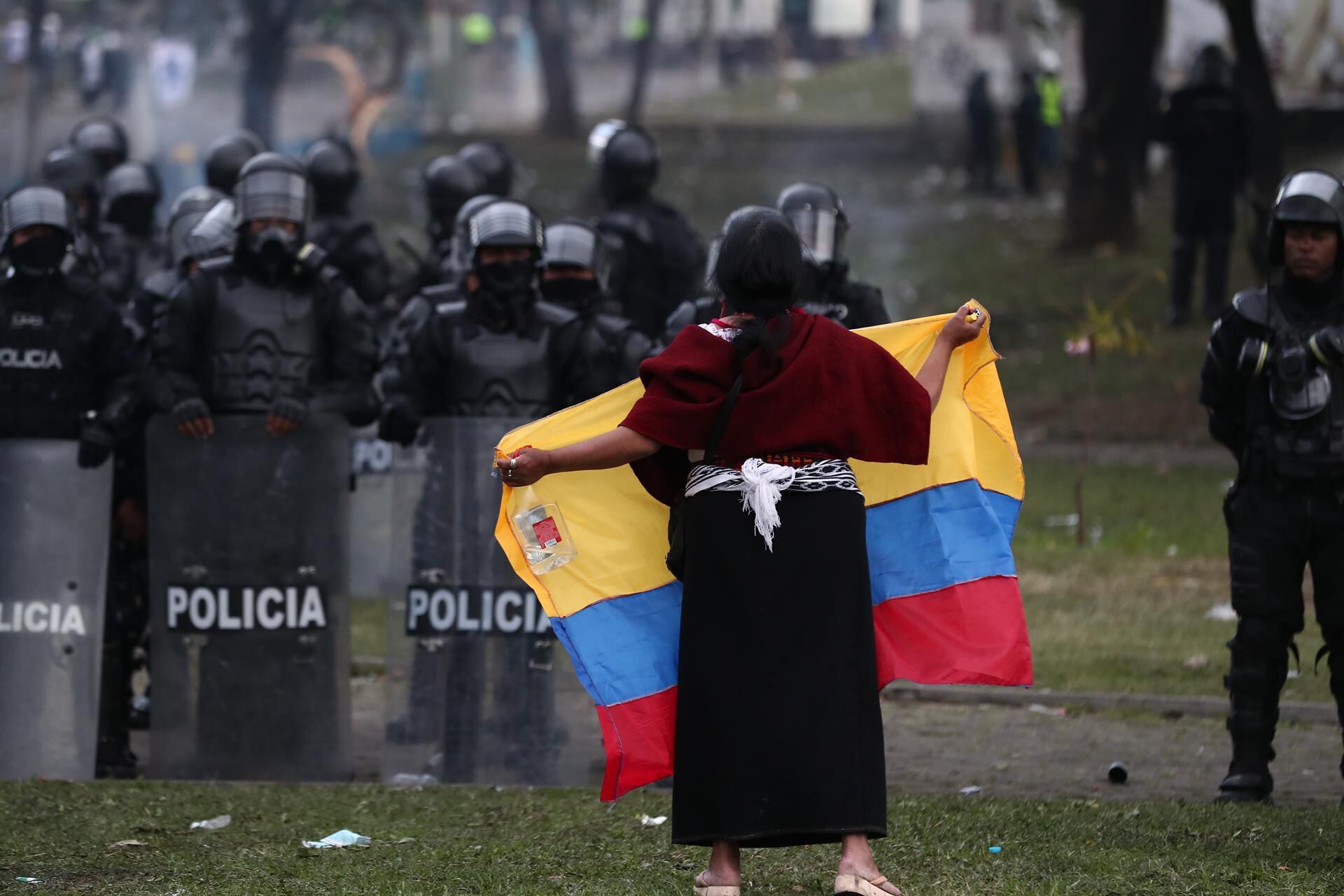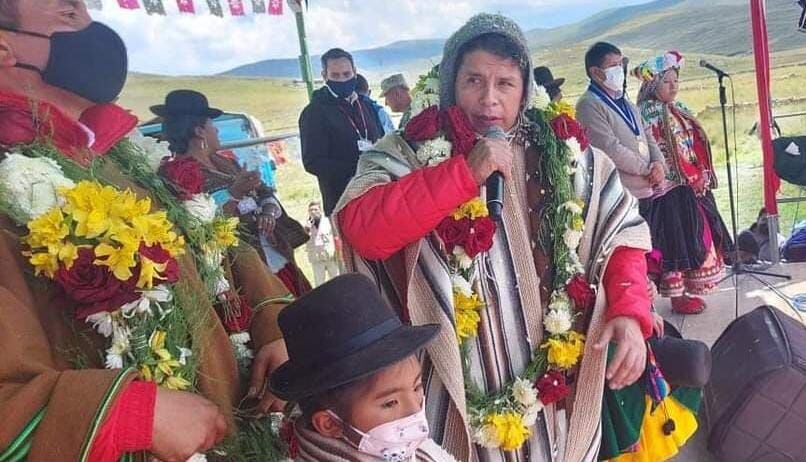If any American academic knows about Peru and Latin America, it is Cynthia McClintock. Honored with the Order of the Sun of Peru in 2008, author of books and countless articles on our country, as well as an expert on the Shining Path, McClintock dedicated it from Washington DC – where she directs the George University Latin American and Hemispheric Studies Program Washington- a time for El Comercio to talk about our region, instability, populism, the Latin American right and left, and the position of the United States. And of course, also peter castle.
READ ALSO | In which Latin American countries does the left govern? (and where his next victory could be)
—The choice of Gustavo Petro is historic in Colombia for being the country’s first leftist president. What does this election mean for Latin America? Is the trend in the region to the left confirmed?
Indeed, Petro is one of several leftist presidents who have been elected in Latin America, but to say that they are from the left is a very general thing. What we saw in the election in Colombia, and we also saw it in Peru, is that there is a lot of polarization, because there is also a populist right. In Colombia, with Rodolfo Hernández [que fue el rival de Petro en la segunda vuelta], and in Peru with Rafael Lopez Aliaga. There are presidents like Nayib Bukele in El Salvador, who also did not attend the recent Summit of the Americas and who is a right-wing populist. Due to the problems that the incumbent governments are having, then the populist candidates are gaining strength.
—Is Latin America fertile ground for this right-wing populism?
I believe that it is a difficult moment for all the governments that are in power. Bukele is perhaps an exception [tiene una popularidad del 90%]. If Hernández had won the election in Colombia, I don’t know if he would have had it easy. It is a very complicated scenario for any government, because the consequences of COVID-19 are still being experienced, there are economic problems, inflation, the war in Ukraine. I think there is now a fairly strong right in Latin America, but the left also has differences, with quite different points of view on climate change or women’s rights.
—How are these lefts different in Latin America? Would Petro be closer to Gabriel Boric in Chile?
It is still early days for Gustavo Petro, but like Boric, he has put a lot of emphasis on climate change and women’s rights in the campaign, and this is seen in the fact that Francia Márquez, the vice president-elect, is an activist Afro-Colombian. The Mexican president, Andrés Manuel López Obrador, does not have much interest in this and has not been very sure about what to do with the climate; Pedro Castillo either. Petro itself has been clear in saying that investments in gas or oil will not continue. So I think Boric is more on that side. In addition, both have attracted many votes from young people.
—How is the Cuba-Venezuela-Nicaragua axis?
The impression I have about Boric and Petro is that they are going to admit that they want to have a formal relationship with these countries. Both criticized Biden for not having invited Cuba, Venezuela and Nicaragua to the Summit of the Americas. Boric has said on several occasions that the authoritarianisms of the left and the right are the same. I think that Petro is going to have a more pragmatic relationship with Nicolás Maduro due to the impact of Venezuelan migrants in Colombia.

—But won’t the dictatorial governments of Cuba, Venezuela and Nicaragua feel empowered by the drift to the left in the region? Do you think they can take advantage of the fact that there are more leftist governments to legitimize themselves before the international community?
This is difficult. They may have relations with China, Russia, but the legitimacy goes much further. The fact that there are so many Venezuelan migrants in the region, as well as Nicaraguans who go to Costa Rica or Cubans who continue to go to the United States, shows the reality of these countries and that they are governments that have many problems. The other leftist governments in Latin America may rightly criticize the US sanctions against Cuba, Venezuela or Nicaragua, but I think they prefer to have a pragmatic relationship. But not legitimacy, because in prison there are many leaders who are critical of these governments.
—What lesson has the Summit of the Americas taught? Was it clear again that Latin America is not Washington’s priority? Has the distance between the United States and the region increased?
The summit was not what we wanted anywhere. It is no longer the 1990s when Bill Clinton and all the Latin American presidents were in favor of democracy and free trade. I think that all countries in Latin America know that the United States has many problems, that there is a lot of polarization here, and the worst thing for Joe Biden is that it is very difficult for Latin American countries to believe in his promises. Biden can promise a lot but he can’t deliver. López Obrador and the Central American presidents know it. Private investment announcements were made to mitigate migration, but it is complicated because the amounts are not what would have been wanted. However, it could have been much worse. At the last summit of 2018 in Lima, Donald Trump decided not to attend at the last moment and showed that he had no interest in multilateralism. We must also remember the summit that took place in Argentina after the US invasion of Iraq, when George W. Bush had to leave before the end of the meeting, because there were many violent protests against him.
I believe that the presidents of Latin America understand that the situation in the United States is difficult, that Biden has good intentions; but they also recognize that Venezuela, Cuba and Nicaragua are part of the hemisphere and that we must work together.
MORE IN WORLD | Bolsonaro says that Colombians will leave their country after the victory of Gustavo Petro
—The election in Brazil is pending and the polls, for now, point to a possible return of Lula to power. With this, the region would already pass to the left…
When Lula was president, the problems of his government had to do with Lavajato and Odebrecht, but it was not a radical leftist government. In addition, there was economic growth, because those years were also good for Latin America. Lula had a good relationship with Bush and Obama. Several years have passed since he left office and a lot has happened in Brazil and the region, he is older and we will see how things develop, but I do not think that if Lula wins in Brazil it means that all the presidents will be behind from Venezuela to greet Maduro.
Lula also worked hard for climate change and at the summits he fought for an understanding between the United States, China, Latin American and African countries. I think he has the ability to unite, partly because Brazil is so big. On the environmental side he could team up with Boric and Petro.
—Now we are seeing indigenous protests in Ecuador. Could the demonstrations end with an early departure of Guillermo Lasso from power?
Ecuador has an unstable history regarding the departure of presidents, as well as in Peru. It may happen. Lasso was elected not so much because Ecuadorians wanted a conservative government but because they feared the return of Rafael Correa. He governed during good economic times, but he was seen as corrupt, too close to China, too authoritarian, and that is why Lasso ended up being elected. The indigenous protest is very complicated for him.

“I do not agree that Castillo is on the left”
—How is the instability of Peru perceived abroad?
The instability of Peru is a concern. Everyone likes to know the rules of the game and the likely policies of the government in power. For investors, changes to the rules of the game are especially difficult.
—How can Pedro Castillo be qualified? Is he really on the left?
In some articles, the only word used to refer to Castillo is that he is from the left, but I disagree. I can’t think of anything he’s done that can be said to be leftist, apart from the symbolic, the fact that he was a teacher in a poor part of Peru and that he said he was going to represent the people. However, the feeling of many Peruvians now is that Castillo does not represent them. Governing in Peru is difficult and we must remember that he obtained less than 20% of the votes in the first round. Many in Peru think that Castillo won because he faced Keiko Fujimori. But I don’t think Castillo can be described as a ruler of the left. Perhaps the qualification that he is from the left is made because it is not known what else could be said about him.

—Castillo came to power at the hands of Peru Libre, a party that is indeed on the left…
Vladimir Cerrón is on the left. With his education in Cuba, he has that vision of the left of the 60s, very different from Boric or Petro. He is from a very traditional left. But Castillo is different from Cerrón and, rather, what he is thinking now is to survive in office, since he is not prepared for those challenges.
—If Castillo leaves office prematurely, is the arrival of a right-wing populism in Peru foreseen?
Not necessarily. Sometimes the president of Congress who has replaced the president has been very focused and capable, like Francisco Sagasti and Valentín Paniagua. The 2021 election was very difficult because it happened during the pandemic, it was difficult to campaign and poll.
Source: Elcomercio
I, Ronald Payne, am a journalist and author who dedicated his life to telling the stories that need to be said. I have over 7 years of experience as a reporter and editor, covering everything from politics to business to crime.

:quality(75)/cloudfront-us-east-1.images.arcpublishing.com/elcomercio/7Q6WP4WPWVHQTO7YXSZLV2U5JM.JPG)





